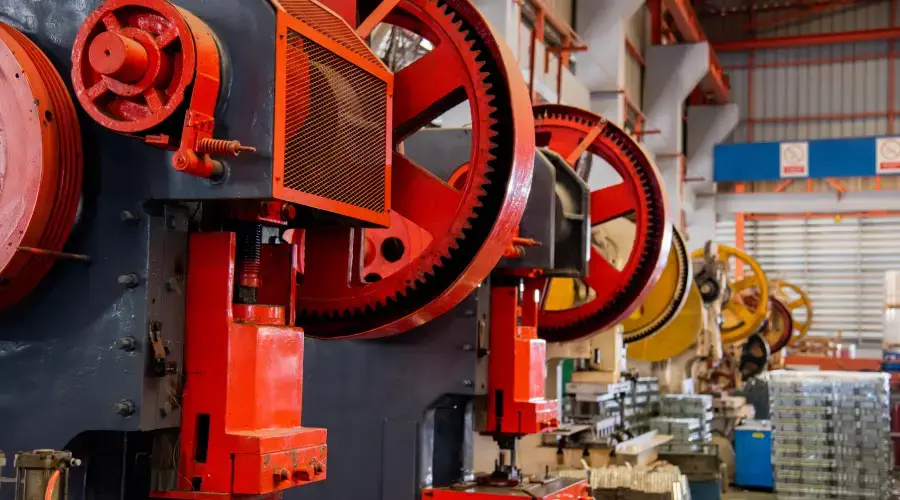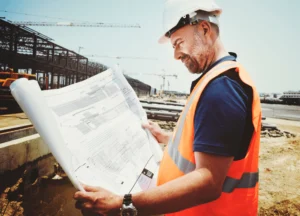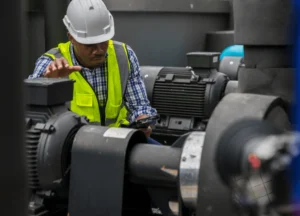Mechanical Equipment Installation: Best Practices for Success

Installing mechanical equipment in industrial environments is a complex process that demands precision, planning, and an unwavering commitment to safety and efficiency. Whether you’re setting up new systems for a manufacturing plant, power facility, or processing operation, understanding the nuances of mechanical equipment installation can prevent costly delays and ensure optimal performance.
From foundational layout to final calibration, this guide will walk you through proven best practices for success. We’ll cover essential equipment setting techniques, common pitfalls, and actionable installation tips to help your team complete projects on time and on spec.
Why Mechanical Equipment Installation Matters

Mechanical equipment plays a central role in the daily operation of industries such as energy, manufacturing, mining, federal and municipals, and infrastructure projects. Proper installation ensures:
- Mechanical and structural integrity that supports long-term system performance
- Regulatory and safety compliance across all applicable codes and standards
- Reduced startup risk and minimal downtime during commissioning
- Optimized alignment and anchoring to protect against vibration and operational wear
- Reliable uptime and extended equipment lifespan through proper placement and support
Whether it’s a pump, turbine, compressor, gearbox, motor, fan, blower, heat exchanger, conveyor, generator, modular process skid, or ball and sag mills, even a small alignment issue can cause vibration, accelerate wear, and lead to critical systems failures.
To avoid costly rework and safety risks, choose a trusted partner in mechanical services to oversee every phase of the process—from planning through post-installation testing.
Planning and Preparation: The Foundation for Success
Site Assessment and Layout Planning
Evaluate load-bearing capacity, spatial clearances, access routes, and connection points. This prevents clashes with existing systems and ensures your equipment functions as designed.
Review of Manufacturer Specifications
Installation should always follow OEM guidelines, which include torque settings, anchor bolt placements, and alignment tolerances. Skipping this step can void warranties and lead to compliance issues.
Project Coordination and Timeline Management
Involving all stakeholders—engineers, electricians, rigging teams, and safety officers—early in the process helps eliminate surprises. Collaborative planning is especially crucial for time-sensitive field services for industrial sites.
Equipment Setting and Alignment: Getting It Right the First Time
Precision Leveling and Grouting
Ensure your machinery is seated properly using shims or precision grout. Irregular surfaces can cause vibration, misalignment, and premature wear.
Laser Alignment Tools
Use laser-guided instruments for precise shaft-to-shaft alignment. This technology significantly reduces human error and allows for real-time adjustments.
“Any deviation from the aligned or colinear condition, however, results in abnormal wear of machine-train components such as bearings and shaft seals..” — Science Direct
Vibration Isolation and Dampening
Install appropriate vibration pads or mounts to reduce stress on the base and surrounding structure. This protects both the equipment and nearby systems from long-term wear.
Safety and Compliance Considerations
Lockout/Tagout (LOTO) Protocols
Before installation begins, all energy sources—electrical, hydraulic, or pneumatic—must be properly isolated. LOTO procedures protect personnel from accidental startups and electrical discharge.
Fall Protection and Rigging Safety
Heavy machinery often requires cranes or hoists. Proper rigging techniques and certified personnel are non-negotiable. OSHA regulations dictate fall protection, proximity, and load-handling requirements to prevent jobsite incidents.
Post-Installation Inspections
Conduct detailed inspections before commissioning the system. This includes checking for leaks, alignment verification, and a dry-run to ensure all moving parts are operational and safe.
Commissioning and Testing: The Final Crucial Phase

Cold Commissioning
Test control panels, sensors, and safety interlocks without operating the equipment under load. This allows safe troubleshooting and calibration.
Hot Commissioning
With the system powered and operational, monitor performance metrics—such as pressure, flow, and temperature—to ensure everything is running within spec.
Documentation and Handover
Keep detailed records of torque settings, alignment readings, and inspection results. These documents are invaluable for future maintenance and audits.
Common Mistakes to Avoid
- Skipping leveling checks or rushing grouting processes
- Overlooking manufacturer tolerances during bolt tightening
- Inadequate training for field crews on specialized equipment
- Poor communication between trades leading to conflicting work
- Failure to document changes made during installation
Every shortcut taken during installation increases the risk of costly repairs, downtime, and even safety incidents down the road.
Statistic: According to the U.S. Department of Energy, proper alignment and installation of mechanical equipment can improve operational efficiency by up to 15% and extend equipment lifespan significantly.
Partnering with a Skilled Industrial Contractor
To maximize uptime and performance, choose a partner experienced in field services and large-scale mechanical work. Look for a contractor with expertise in:
- Heavy machinery rigging and placement
- Multi-industry mechanical services (e.g., mining, chemical, and food & beverage)
- Welding, fabrication, and structural integration
- Post-installation support and maintenance
Success Is in the Details
Loenbro offers turnkey equipment setting services built around precision alignment, vibration analysis, and proper base preparation, ensuring every component is installed for peak performance, long-term reliability, and minimal downtime across a wide range of rotating and fixed equipment applications.
Mechanical equipment installation is about more than just moving metal—it’s about performance, precision, and planning. By focusing on best practices, from alignment and grouting to commissioning and documentation, you ensure that your investment delivers returns for years to come.
Whether you’re expanding an existing facility or launching a greenfield operation, attention to detail during installation can prevent failure, reduce maintenance costs, and keep your operation running at peak efficiency.

